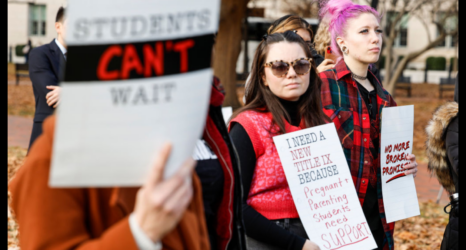“The announcement about Scotland is really exciting. Menstruation is being elevated as a barometer for how we treat our citizens, for what success of a citizenry looks like, and that is important.”
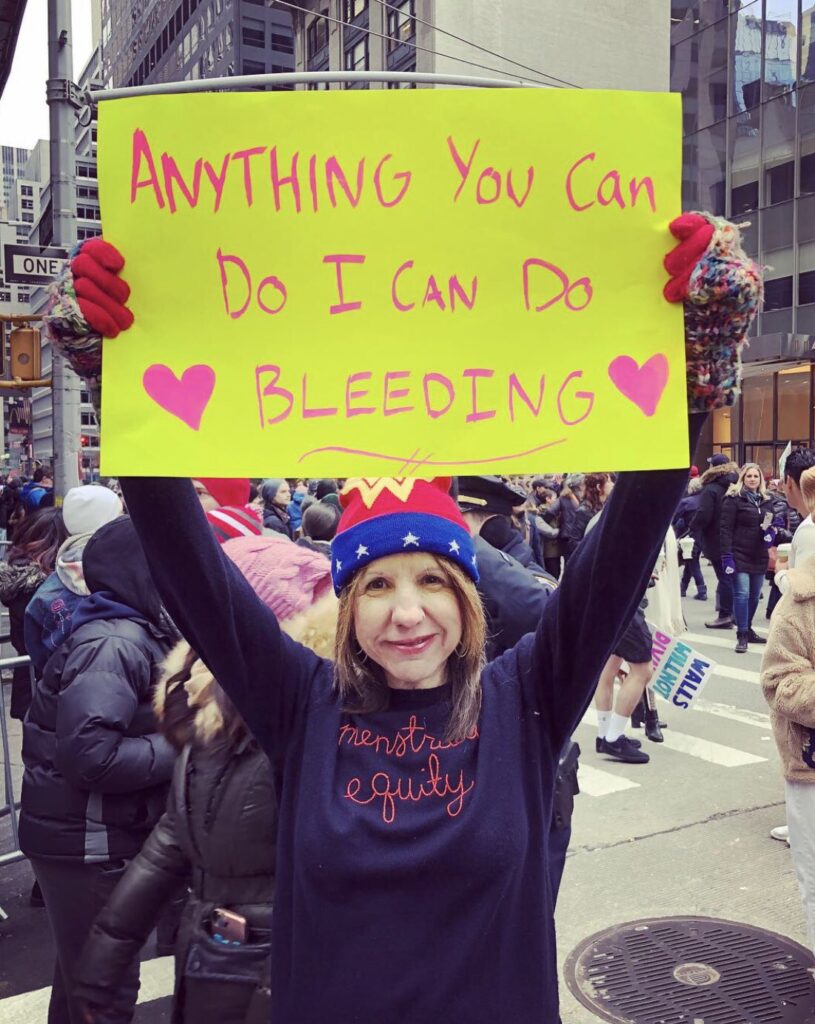
Aunt Flo. Red tide. That time of the month. Menstruation. Whatever you call it, it’s a fact of life for most cis women and trans men. In fact, the average menstruator will spend a whopping 2,500 days of her life menstruating, which equates to nearly seven years of bleeding. Despite this, period products in many places are expensive. Lack of access to menstrual products can even prevent young people from attending school.
Scotland recently became the first nation in the world to step up and face this problem head on. In a new national mandate, all period products in the country will be free for anyone who needs them. This sweeping, progressive law is revolutionary not only in its originality, but in its implementation.
During times like this of great tumult and change, it’s best to go to the experts—so Ms. writer Steph Black sat down with menstrual equity expert and founder of Period Equity, Jennifer Weiss-Wolf to discuss the historic nature of Scotland’s new law; how it’s going to work, in practice; how we might model it in the U.S.; and how COVID is affecting menstrual equity here in the States.
This interview has been edited for length and clarity.
Steph Black: What does it mean for a country to have a national mandate to provide free menstrual products? And what will the implementation of Scotland’s law look like?
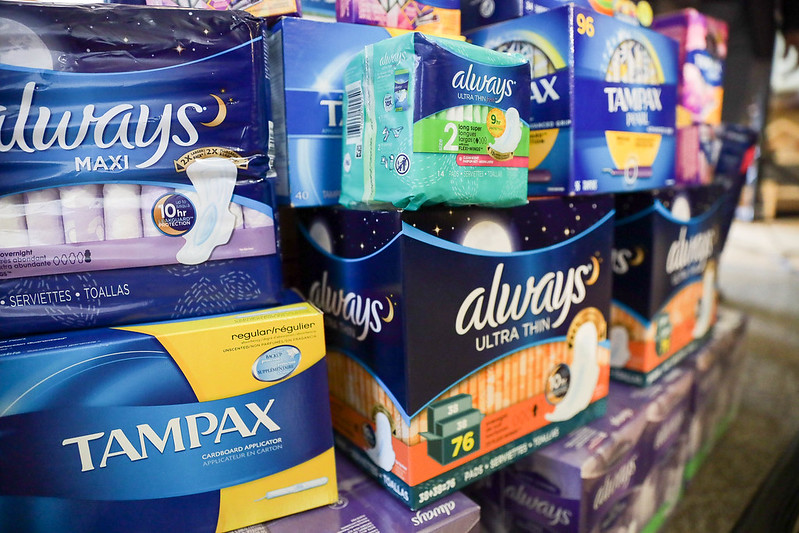
Jennifer Weiss-Wolf: The announcement about Scotland is really exciting, as well as the fact that it is a national mandate and that it’s under this umbrella of menstrual equity or “period poverty.” The idea that menstruation came first—it’s not something that got swept into a broader discourse—is meaningful. Menstruation is being elevated as a barometer for how we treat our citizens, for what success of a citizenry looks like, and that is important.
I dug through the law a bit because I was curious, too, about what implementation would look like—especially when I saw the trolls on Twitter asking whether this mandate means shopping sprees for people who want to ransack the aisles for tampons. Of course, that’s not what the law looks like.
It’s a three-pronged approach. The first encompasses schools and universities, which sweeps into it a pre-existing law in Scotland that mandates the provision of menstrual products in the school system for colleges, universities, and secondary schools. This policy has gained traction here in the United States, too.
The second prong is a requirement that any government building could be required to provide menstrual products—anything from courthouses to public benefits offices to public parks. That also is mirrored in the United States in some of the legislation that we’ve seen.
The third prong is the most creative. Basically, people can make an individual request, either in the form of some sort of special card or voucher for products, and then receive the disbursement or the ability to access that product in a grocery store or wherever they might have the easiest access. It seems like there will be a variety of ways from which people can do it.
What I like about that is it takes us out of the umbrella of period poverty. This approach acknowledges that for some marginalized populations, accessing menstrual products can be challenging or dangerous.
Whether we’re talking about folks who are trans, folks who are in domestic violence situations, young people who have family circumstances that they don’t want to be public about—there are a lot of ways that an ability to access mental products can impact people that go beyond the confines of poverty or financial challenges. That to me is the most forward-looking aspect of this legislation that we don’t see mirrored in the way we talk about policy in the U.S. It’s very aspirational. What they did in Scotland really set the stage for a higher level of discourse.
Black: Building off that—Scotland is very different from the United States in size and diversity. Scotland is about half the size of New York City alone! Given the differences not only in population size but a different structure of governance than in the U.S, what is our best hope of potentially using some of Scotland’s law as a model?
Weiss-Wolf: Here in New York City, where I live, we were among the first to pass laws distinctly around this idea of menstrual equity, leading with that as the rallying cry. New York City in 2016 passed a slate of three laws mandating the provision of menstrual products in all of its public schools, shelters and correction facilities. I worked with the New York City Council on that front in 2015 and 2016 on the legislative package spearheaded by Julissa Ferrares Copeland.
Even just comparing Scotland and New York City is eye-opening. Think about what it means for a city like ours—that is much more compact in terms of space, packed with people who represent all walks of life. Even that comparison of size alone shows you how hard it is to compare the progress in Scotland with the progress here in the U.S.
New York City’s legislation probably did less than it could have to consider what it means to be part of a marginalized group and managing menstruation. For example, the corrections bill that mandates menstrual product provision in the city’s jails doesn’t go far enough in terms of acknowledging the power dynamic at play, and truly considering what access can and should look like in prisons. The law still puts the people who are incarcerated in the position to have to ask for something from somebody who wields a lot of power, and the ability for that person in power to deny or humiliate or degrade the people who ask for menstrual products.
What I’ve learned—at least from the way that the Scottish law is written—is that the U.S. laws can be framed in a way that transcends just economic ability to afford menstrual products and really taps more into the social dynamic of menstruation that is still so squarely rooted in misogyny, racism and power imbalance. These things that need to be more affirmatively considered as we craft new policies. But that’s also part of live and learn! Now that we’re considering the trajectory going forward, what we’ve seen in Scotland lends itself to opportunities for improvement here in the United States.
Now about governance. The U.S. is complicated—we have a federal system and we’re also a republic of states. For many people, local governance is how their lives are most deeply impacted. In this menstrual equity space, this is the policy agenda that I’ve been part of forging since 2015—one that offers opportunities for each kind of jurisdiction, and for federal levers to be pulled to do the big job of ensuring menstrual access and of destigmatizing menstruation.
So, I don’t think there will ever be a national mandate in the U.S.—mostly because it just doesn’t work that way here. There are very powerful examples of federal laws that focus on menstrual access, affordability and safety, but the laws don’t mean there is this automatic panacea for everybody—just the places where federal law has an influence on our lives.
The two examples of federal menstrual access provisions aren’t of the ilk of leading with menstruation—they’re the reverse, when menstruation is folded into broader economic or justice-related policy agendas. The first was back in 2018 when Congress passed the First Step Act, which is a whole series of prison condition reforms and sentencing reforms. Included in that are provisions focused on incarcerated women, and one of those is menstrual access. Actually, Trump is the president who signed this very first menstrual access provision into federal law.
And in 2020, Trump also signed the second ever piece of federal menstrual legislation and it’s COVID-related. When Congress passed the stimulus package called the CARES Act back in March, included in the legislation is a provision that I first proposed back in 2015 and had worked with members of Congress to introduce over the years. It relates to the IRS tax code and its classification of menstrual products that doesn’t deem them as qualified medical expenses.
That misclassification results in economic detriment—in particular, for people who utilize flexible spending account allowances and health savings account allowances (pre-tax dollars employees can put aside, then use for qualified medical expenses). People were unable to use their pre-tax dollars to buy menstrual products, even though they could buy things like contact lens solution and sunscreen!
This misguided classification of menstrual products by the IRS was addressed in the CARES Act and was really meaningful for multiple reasons, not only for the economic benefit of people who use those accounts, but for the symbolic and precedent-setting nature of that classification.
Not only does that classification of menstrual products enable stronger advocacy for other interventions and other policies, but it also acknowledges the fact that during the pandemic, menstrual products is yet one more way people are being burdened.
There is a third federal intervention that has been introduced but has not had as much traction called the Menstrual Equity for All Act that Congresswoman Grace Meng introduced. Among the provisions of that bill, which was introduced in the House, includes requiring Medicaid to cover the cost of a product. It also includes using education law to ensure that products are part of school budgets, and labor law and health regulations for the workplace by OSHA to mandate menstrual product provision by certain employers.It also includes one that’s super creative, which is kind of an epilogue to the First Step Act, which requires that women who are incarcerated in federal facilities receive menstrual products. Given that the vast majority of women who are incarcerated are not in federal facilities but in state facilities, the Menstrual Equity for All Act requires that any state that receives federal criminal justice funding has to provide menstrual products in order to receive that funding. That’s a super creative way to demonstrate that a federal lever matters.
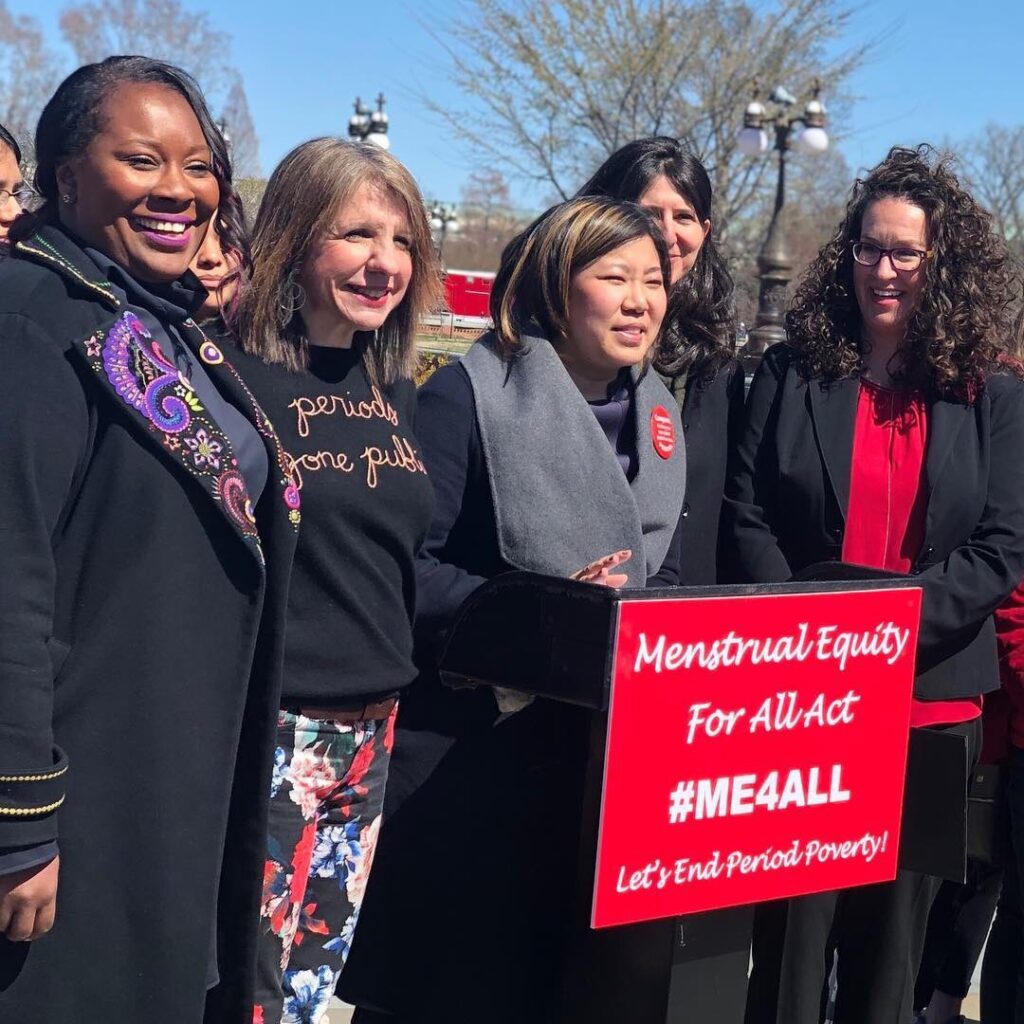
Black: What can state and/or local advocacy accomplish in addition to federal interventions?
Weiss-Wolf: At the state level, one of the fights that readers are probably familiar with is the fight to end the taxation of menstrual products, to create sales tax exemptions for menstrual products, a.k.a. the tampon tax.
That has been a very lively fight and it’s seen extraordinary momentum. Nearly all the states that still tax menstrual products have introduced legislation to rectify that, and 10 have actually seen it through in the past five years. That’s pretty extraordinary success for a young and fairly fringe campaign when it started.
Six states, for example, now mandate menstrual product provision in schools. And 13 states do in their state and local correctional facilities. There’s so much potential for and momentum with state-based advocacy.
Local advocacy as well is important. Go to your local school board, go to your town hall, go to your local public library. These are all places where the public is served and therefore menstruation and menstrual needs should be served, too. Sometimes it just takes a citizen going in and asking. It doesn’t necessarily have to be marching up the steps of Congress, but engaging in everyday activism and small acts of rebellion or revolution–that’s how it’s done.
Black: How does the Equal Rights Amendment fit into this equation?
Weiss-Wolf: We’re on the precipice of potentially seeing the ERA come to its full passage in our lifetime, after a century of activism. With Virginia’s ratification last year, we technically now met the 38 state marker, and it’s left now for Congress to figure out how we move this amendment forward.
Should we see an ERA, one of the most important facets of it is that it will help us avoid this piecemeal approach to menstrual equity when we can create a national standard. If we include menstrual equity as one of the markers of equality within the framework of the ERA, it would enable us to have a national standard by which states, localities, and even the federal government, would be held accountable. We would not have to do this fight over and over and over from state to state. That is, to me, is the most important contribution of the ERA and its overlap or intersection with menstrual equity.
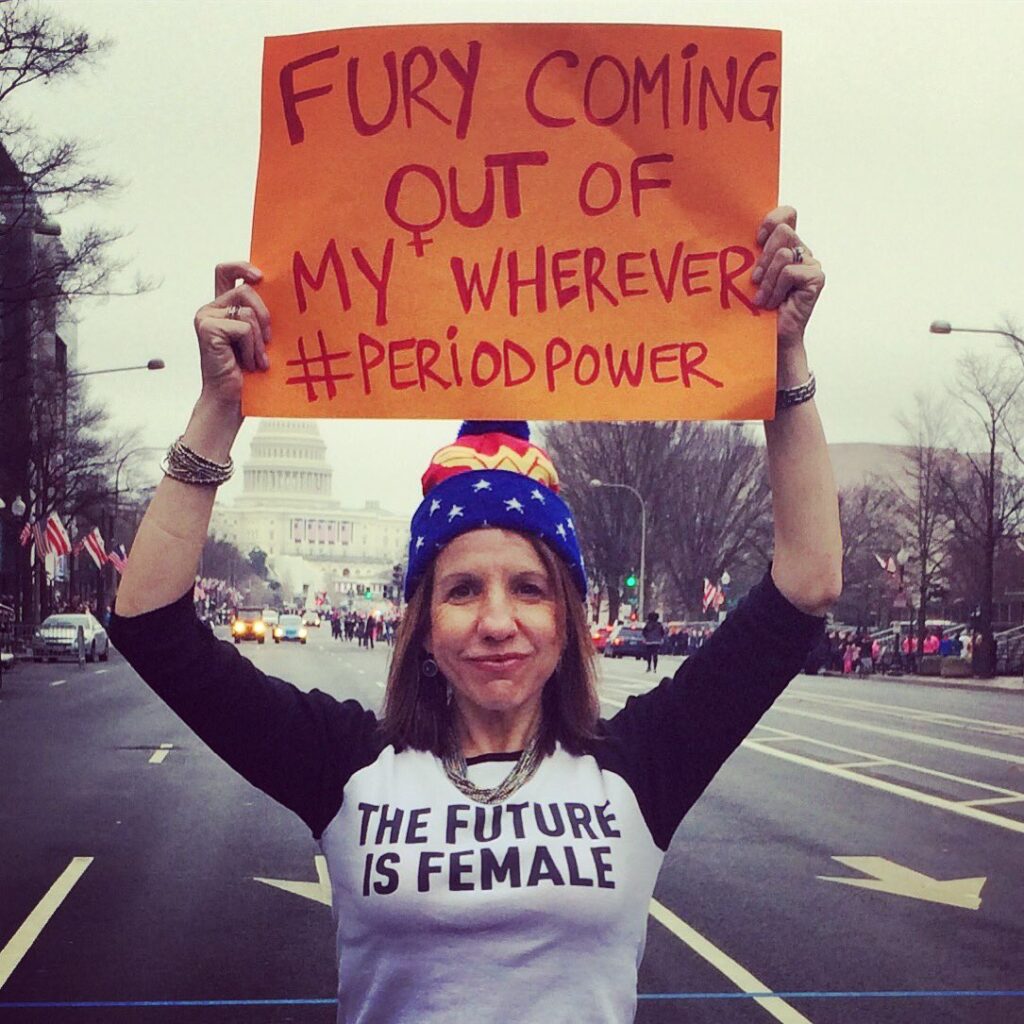
Black: How is COVID-19 exacerbating inequality in health care, especially around menstrual access, and are menstrual equity reforms even possible in the midst of this pandemic?
Weiss-Wolf: I wrote a piece back in March called “Periods Don’t Stop for Pandemics,” and it explored a lot of the unexpected ways that menstruation or access to menstrual products were intersecting with life during this pandemic. All of them were surprising even to me as a person who thinks about this all the time.
A couple of examples: We fought hard for school access to menstrual products, but as schools closed, the necessities that people rely on were suddenly either nonexistent or horribly strained. Having to think creatively about what it meant to meet people where they’re at when they weren’t able to leave their homes or had great restrictions in their mobility is an important consideration.
There are a few ways that folks have addressed it and people on the ground were stepping up quickly. There’s an amazing mother-daughter duo in Philadelphia called No More Secrets who go door to door in Philadelphia and deliver menstrual products, meeting people where they are in their neighborhoods, in their communities.
In New York City, where meal hubs were set up to ensure that kids who weren’t in school were nourished, some students pushed the city council to make sure menstrual products were also included when people would come in for meals. Menstrual products aren’t doing anybody any good if they’re stocked inside closed schools right now! Those are the kinds of creative interventions people were already spearheading when seeing how the crisis was causing people to lose their safety nets.
But there were other surprising ways that people who menstruate are impacted by the pandemic, too. One that really startled me was the vast number of essential workers in this country who are women. A high proportion of health care workers are women. So are people who work in retail and customer service, groceries, all of that. These are folks who are working on their feet for hours on end who aren’t necessarily afforded the kind of work conditions that allow them to manage menstruation on a good day.
Menstruation can also exacerbate abuse, whether it’s needing to take money from a family budget and using it on menstrual products or even just the ability to exist in one’s household, feeling safe and sound. These are all the quiet ways that women shoulder so much of the burden of society. Menstruation is part of that. A group called I Support the Girls founded by Dana Marlowe had an onslaught of requests from domestic violence shelters expressing the profoundly dangerous circumstances for people who are sequestered at home in abusive relationships and how menstruation can also exacerbate that.
I say “women” but I recognize that there are also people who are nonbinary and trans who are in challenging and often deadly circumstances that are exacerbated by the conditions of the economic and health and racial crises that the pandemic has laid bare.
Black: What are some of the solutions to addressing menstrual equity problems created and exacerbated by the pandemic?
Weiss-Wolf: My solutions are, one, to flag the CARES Act as emblematic of what the government can do. I recognize it’s not the end-all-be-all of laws, but it shows that our government does understand that this crisis, and particularly the economic crisis, impacts anyone who menstruates that much more.
I’ll add that the tampon tax fight in the states has been ongoing, but there was one tampon tax victory during COVID-19 in which the state of Washington had passed legislation in March and then Governor Inslee signed the bill into law in April. That the state was so squarely in the midst of the pandemic while that bill was signed was a large indication of the understanding that any kind of economic relief that could be provided around menstruation is relevant.
My nonprofit, Period Equity, brought a constitutional legal claim against the state of Michigan during the pandemic. We filed our lawsuit in August and argued the tampon tax is a form of illegal, unconstitutional sex-based discrimination. We related it to COVID and the “she-session”: Any sort of economic relief for women and/or around menstruation is needed more during this crisis, not less.
You may also like:




